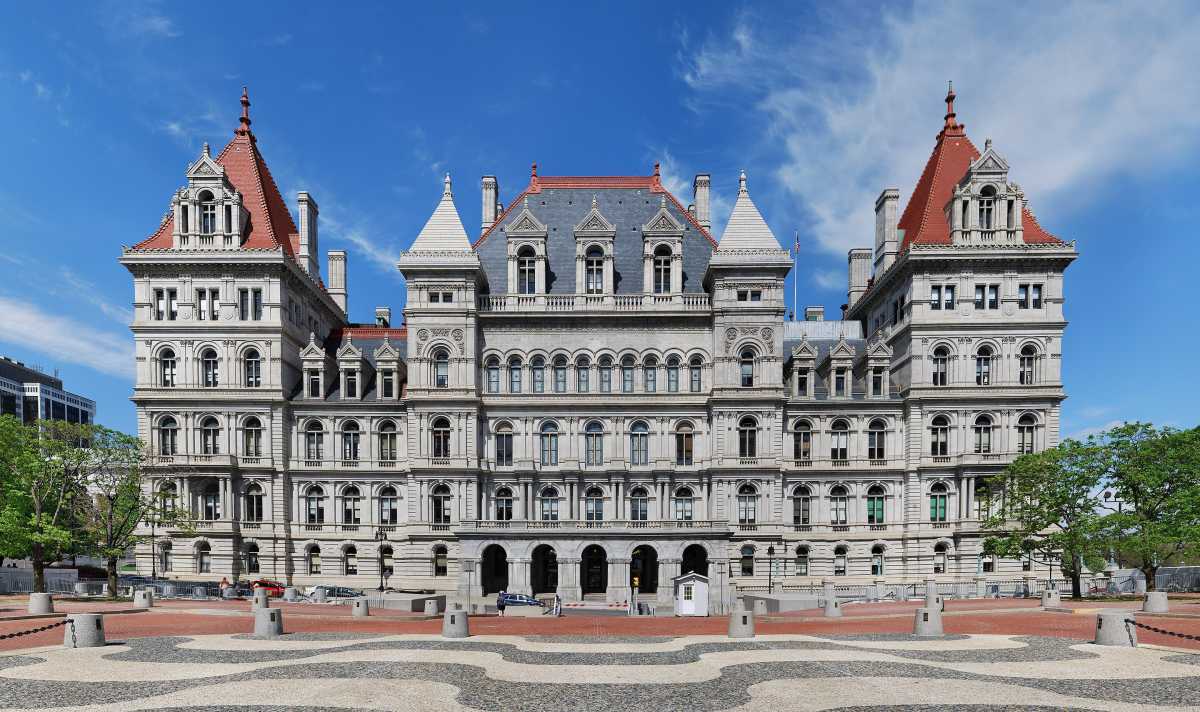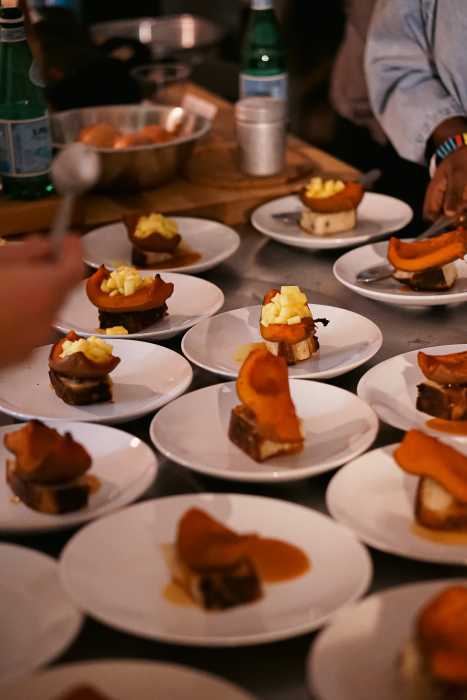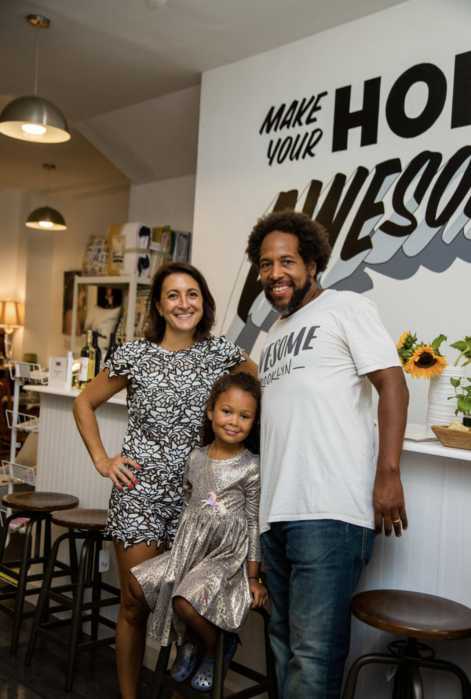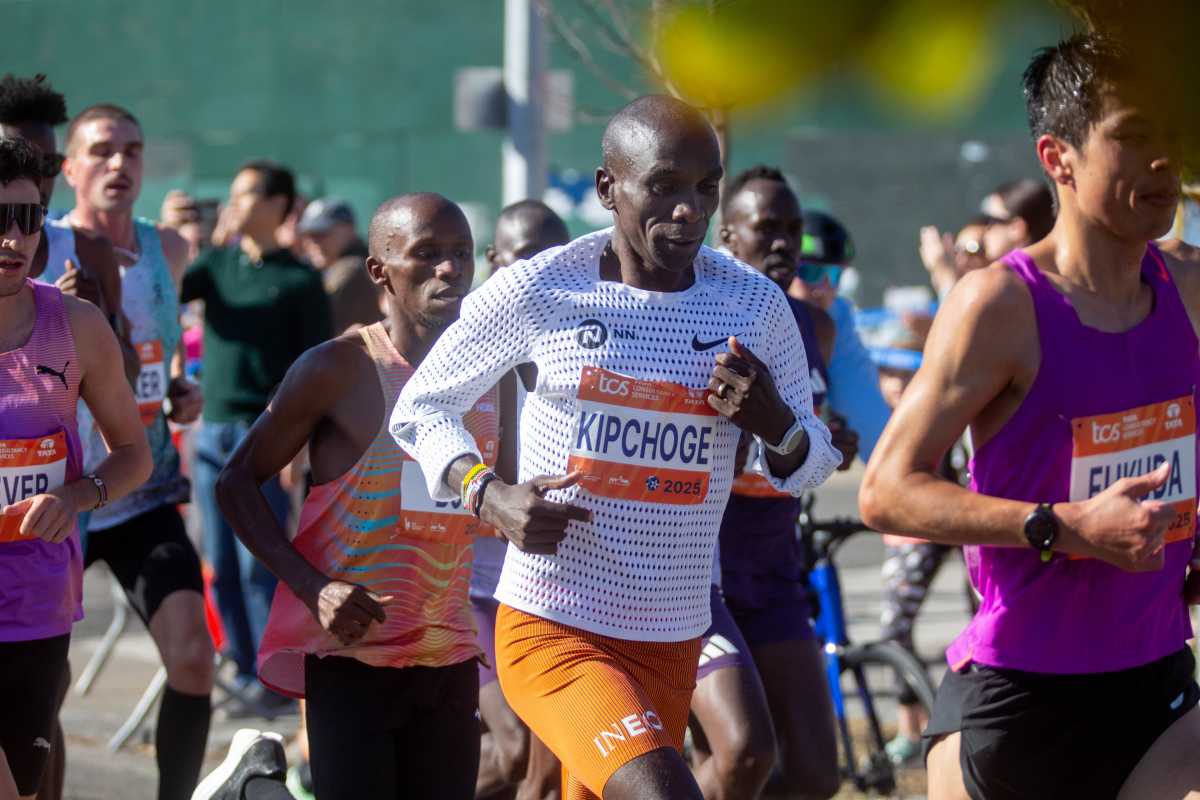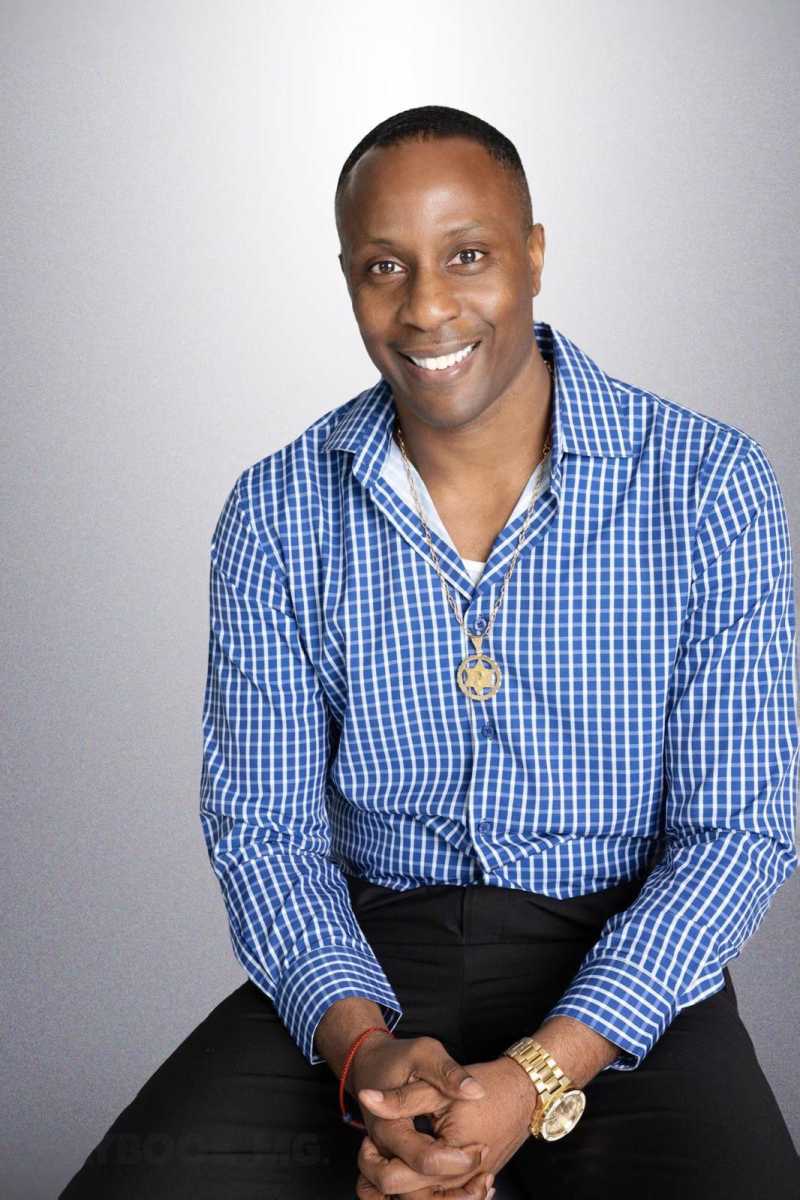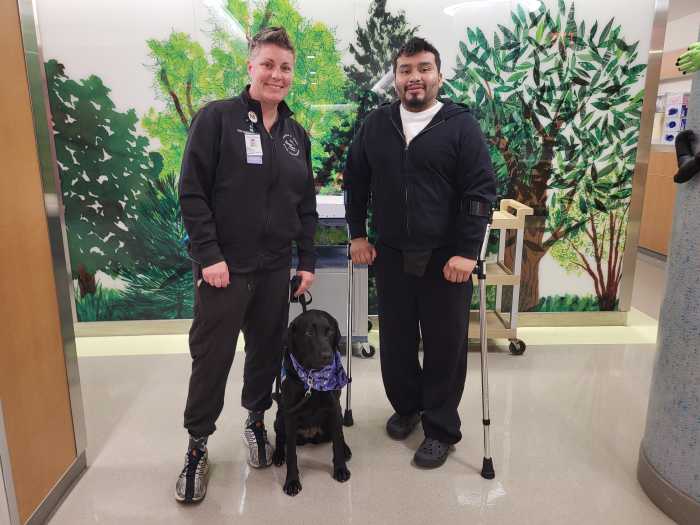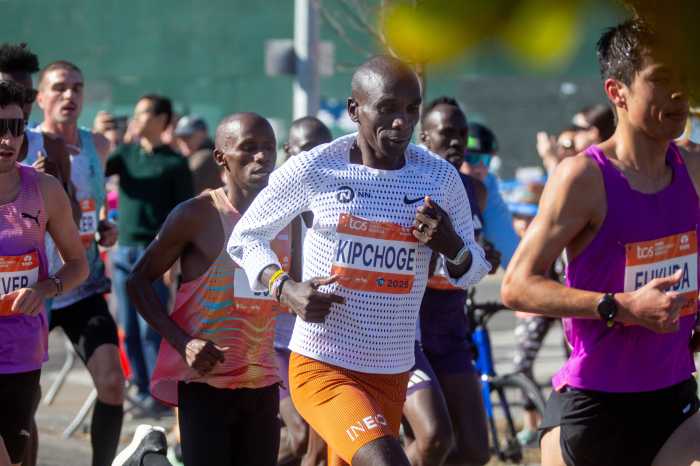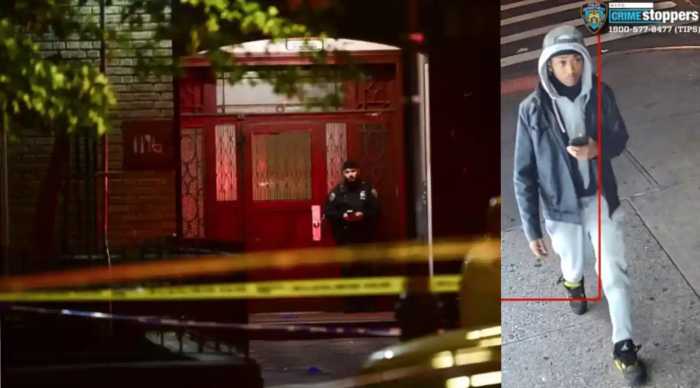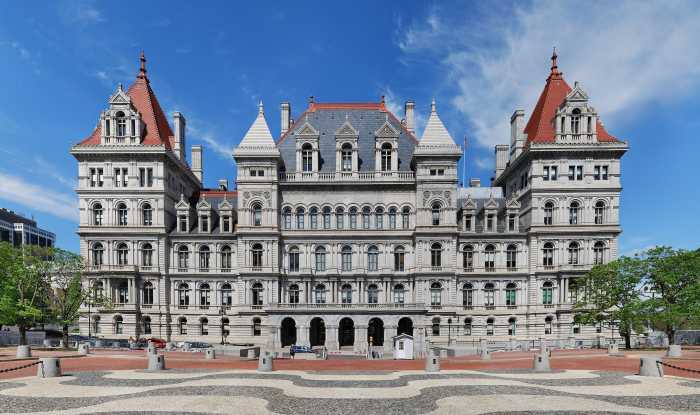
 BY LINCOLN ANDERSON | Standing on one of the new Whitney Museum of American Art’s outdoor terraces, one can take in the whole sweep of the surrounding neighborhood. According to the museum, this was the intent: to have the terraces face inward toward the city, as opposed to outward toward the Hudson River.
BY LINCOLN ANDERSON | Standing on one of the new Whitney Museum of American Art’s outdoor terraces, one can take in the whole sweep of the surrounding neighborhood. According to the museum, this was the intent: to have the terraces face inward toward the city, as opposed to outward toward the Hudson River.
From the museum’s terraces, one can visually track how the Meatpacking District has evolved. Just to the north is the Standard Hotel, completed in 2009, perched on a massive trestle, straddling the High Line below. The elevated park opened the same year and immediately became one of the city’s top tourist attractions.
On a recent Sunday, the High Line was teeming with people swirling about below tree boughs blooming with white and purple petals — almost like some sort of wildly busy Jackson Pollock painting when viewed from the Whitney’s terraces above.
Over on Washington St., a former row of meat lockers — with forgotten names like Lamb Unlimited and Diamond Meats — has been transformed into an office building sporting a twisting black metal lattice and grass lawns. It’s the new home of the cutting-edge cell-phone giant Samsung.

The new Whitney Museum.
Now, rising majestically at the center of it all, is the new $422 million Renzo Piano-designed Whitney Museum. which opened to the public on Fri., May 1.
First Lady Michelle Obama was at the preview ceremony the day before with Mayor Bill de Blasio and others.
“I took a brief tour and I fell in love with the building,” Obama said. “This was the most beautiful freight elevator I’ve ever ridden on. Just about every space in this building is magnificent.”
Robert Hurst, the museum’s co-chairperson, noted, “Rarely does one have the opportunity to build a museum from the ground up in New York… This defining location places the Whitney among the city’s cultural icons.”
Piano, the architect who created the massive “floating ship,” spoke over the occasional din of traffic from the nearby West Side Highway.
“Mama mia!… What a joy. Welcome to the brand-new piazza,” he said. “Some like to call it the lobby. I’m Italian, I call it the piazza. It’s a place of meeting — it’s a place of city life.”
The piazza is specifically the 8,500-square-foot public plaza beneath the museum’s dramatic cantilevered entranceway.

Part of the Whitney’s inaugural exhibition.
“I wanted to make it fly,” Piano said of the design of the 220,000-square-foot building, which sits on enormous support poles, suspended over the glass-enclosed first floor, as if on air. However, Piano quipped, “It’s 28,000 tons — so it doesn’t fly.
“Art is freedom,” he said. “Especially American art — a bit wild.”
As a result, the building must mirror that feeling, he said: “It’s got to be brave, flying…a bit unpolite.”
The museum’s 18,000-square-foot fifth floor is the largest column-free museum exhibition space in New York.
“I love making buildings, but I especially like making buildings for public use,” Piano said. “Art and beauty make us better people. Beauty builds curiosity and desire. I’m pretty sure that beauty will save the world.
“Thank you for coming,” he concluded. “The building is yours.”
Adam Weinberg, the Whitney’s director, said, “People are calling the building ‘generous’ — airy, open, light, but comfortable and warm.”
Mayor de Blasio said “This is an extraordinary day for New York City, for this nation, for art,” he said.
Eighty-four years and four locations later, the museum has returned to the neighborhood where it all began.
Gertrude Vanderbilt Whitney, an artist, art patron, collector and member of one of America’s wealthiest families, started the museum back during the Great Depression. Back then it was known as the Whitney Studio Club and was located in her apartment on MacDougal Alley. She would hold salons there.
The mayor said, “Our first lady knows that the arts are essential to the development of our young people.”
Growing up on the South Side of Chicago, Obama recalled, she didn’t think places like the Whitney were for her. Too many children today feel that way, she said.
Even a little exposure can go a long way.
“One visit, one performance, one touch — and who knows? — you can change a life,” Obama said. “You can find the next Edward Hopper — or who knows? — the next Barack Obama.”
The museum includes a wall-length painting by Lee Krasner done right after her husband, Jackson Pollock’s, death; plus “Calder’s Circus,” a diorama of small wire sculptures of big-top performers by Alexander Calder, with which he would do live performances; as well as Willem de Kooning’s famously frenetic “Woman and Bicycle”; Jean-Michel Basquiat’s cynical “Hollywood Africans”; and an in-your-face nude by Carroll Dunham, father of Lena Dunham of “Girls” fame.
Works by Mark Rothko, Georgia O’Keefe and Thomas Hart Benton hang near those of other artists whose names are unfamiliar to most.
The museum’s top floors can all be accessed by exterior stairways. Walking down the sleek metal-grate steps, one has the feeing of climbing down through a great clipper ship’s rigging. It also provides a nice breath of fresh air and a visual recharge after viewing each floor’s artworks.
The work is arranged chronologically, becoming more contemporary as you descend. Particularly poignant, in the ’60s section, in light of the 40th anniversary of the Vietnam War’s end, is Howard Lester’s video installation “One Week in Vietnam,” which rapidly flashes the names and photos of all the U.S. soldiers killed during a single week, while the Everly Brothers’ “Bye Bye Love” plays along.
Even the bookstore / gift shop, on the first floor, has an open feeling: It has no walls.
The museum was open for free for members the Sunday before the public unveiling.
“Oh, it’s wonderful,” said Harriette Silverberg Natkins, an Upper West Sider, after visiting the museum. “Have you been to the other Whitney? This one lets the art breathe.”
Standing on the plaza out front, Karen Groner, a designer from Bank St., said, “It’s visually beautiful inside. All three elevators are different. Each floor sort of has a different window configuration. And I love the wooden floors… And I think the plaza is going to be a zoo all summer.”
Will, however, the Whitney be a bit too dynamic? The place’s V.I.P. grand opening April 24 brought a reported crowd of 3,000 partiers to celebrate Downtown’s new art mecca. It was so packed, some people were reportedly worried about the safety of the art on the wall, according to the Post’s Page Six. Among the boldface names rubbing shoulders were artists Julian Schnabel and Kiki Smith and actors Sarah Jessica Parker and Dakota Fanning.
“I was there Friday night,” said Elaine Young, a member of Community Board 2 who lives on Jane St., a block away from the new museum. “There were probably 7,000 people. I said, ‘How is this different from a club?’ There was a bar on the ground floor and at least two or three bars on the other floors… I had a Scotch.
“One thing the neighborhood is very weary of — they’re going to have a lot of events,” she noted. “All these terraces they have, we don’t want to see rock bands on them blaring on Friday night.”
Last Friday night, however, she said, around 11 p.m., a D.J. on one of the balconies was manning a soundboard and beaming out “a New Age-y thing.”
An e-mail was promptly fired off to a top Whitney community-relations official and, within 10 minutes, the throbbing tone had faded away.
Young said she and fellow Village activist Zach Winestine “negotiated a very complicated State Liquor Authority agreement” with the Whitney, under which Danny Meyer’s ground-floor restaurant will close at midnight Sunday to Thursday and 1 a.m. Friday and Saturday, with only six events with amplified sound on the terraces per year. The State Liquor Authority approved the stipulations, Young noted.
Although Young said they’ll “have to be very careful about use of the terraces,” over all, she’s bullish on the new museum.
“There’s always people who say it’s too much traffic, too much noise,” she said. “I think the Whitney brings a glow to the neighborhood.”
Admission at the Whitney Museum is $22. (Seniors/students, $18. Under age 18 and members, free). Annual membership is about $80.







